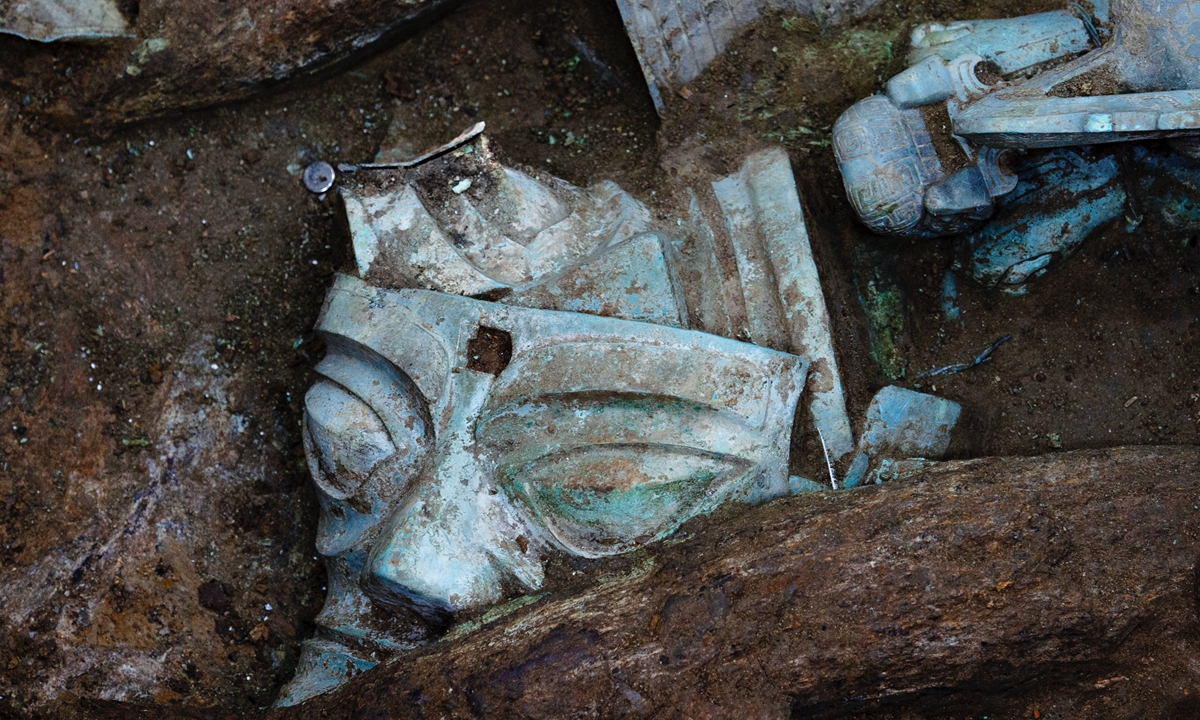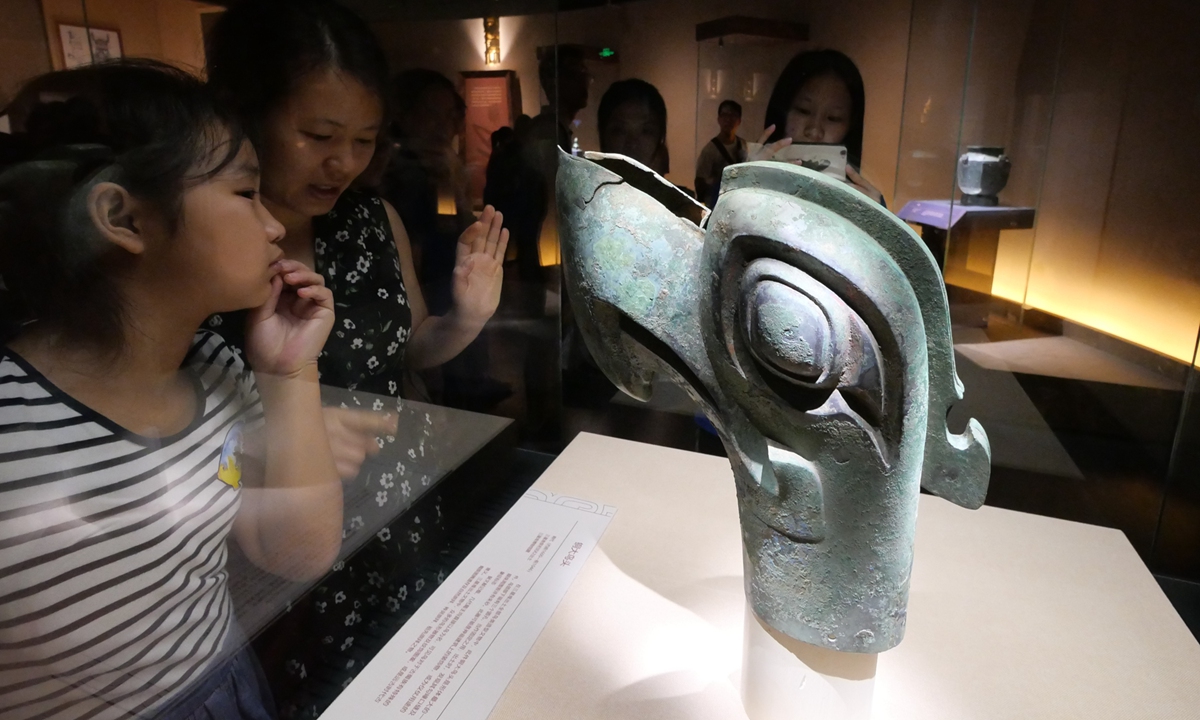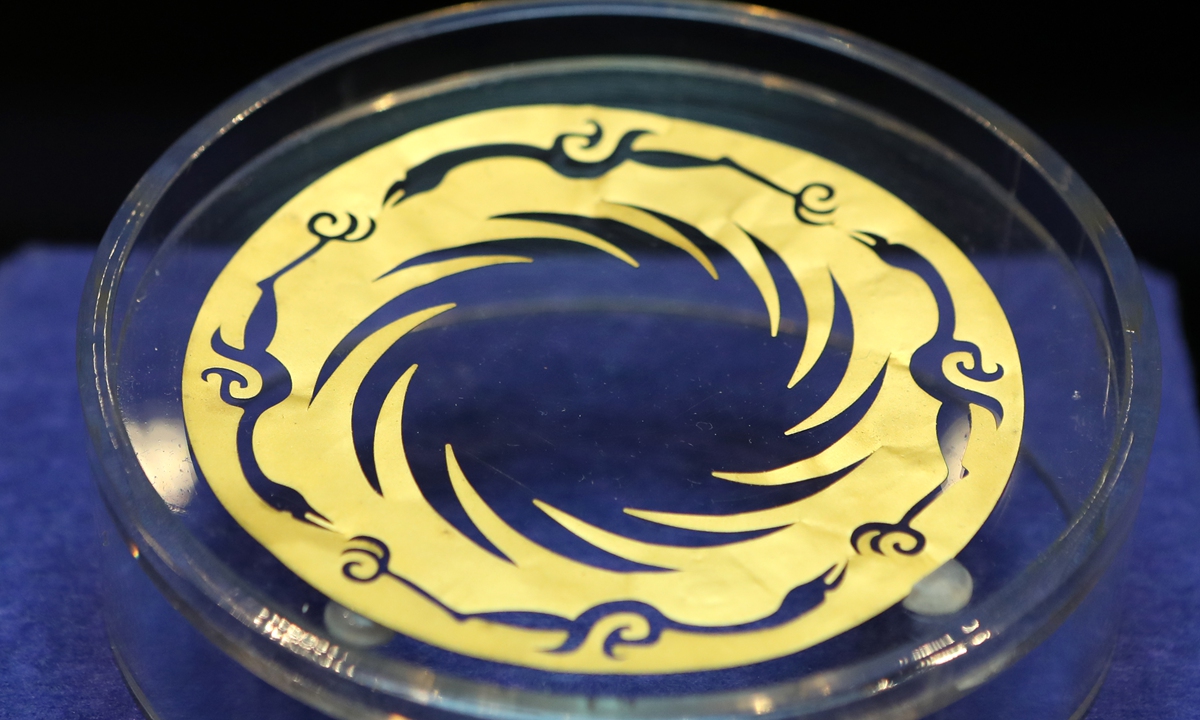
The bronze mask with protruding eyes from the Sanxingdui Ruins Photo: IC

The bronze mask with protruding eyes from the Sanxingdui Ruins Photo: IC

The Golden Sun Bird from the Jinsha Ruins Photo: IC
Editor's Note:
Southwest China's Sichuan Province and Chongqing Municipality are well-known to the world because of their natural scenery and long-lasting cultural heritage and traditions.
Chinese President Xi Jinping on Wednesday inspected the city of Meishan in Sichuan and visited the village of Yongfeng and the San Su Ci.
Here the Global Times will follow in the steps of China's top leader so that readers can appreciate the beauty of Sichuan and Chongqing and learn about the long history of the region's Bashu culture as well as its modern sites like Tai Koo Li in Chengdu.
Amidst the implementation of a national program to research the origins of Chinese civilization, the discoveries at the Sanxingdui Ruins in Sichuan Province such as a golden mask and bronze standing figure with mysterious large eyes have been seen as important evidence of Chinese civilization's unity in diversity.
The Sanxingdui and Jinsha ruins, commonly considered as Sanxingdui's next developmental stage, are the core of research into Bashu culture, the regional culture that formed in the upper reaches of the Yangtze River centered on Southwest China's Sichuan Province and Chongqing Municipality. The two ruins have been preparing to jointly apply as a UNESCO World Cultural Heritage as the ancient Shu civilization.
"Though there had been assumptions that the Bashu region was a place of desolation, with the discoveries at the Sanxingdui Ruins, the prosperity of the area can be seen from the art, handicrafts, and economy of the times and the huge contribution they made to Chinese civilization. Even today food and art with a distinctive Chuanyu [Sichuan-Chongqing] style has been quietly influencing the world," Zhou Xueying, a history professor at Nanjing University, told the Global Times on Sunday.
Significant roleWalking into the museums for the Sanxingdui and Jinsha ruins, tourists are sure to be stunned by the abundance of the cultural relics on display, which are windows that give modern people a peek into the ancient Bashu culture that existed during the pre-Qin period (before 221BC).
Unearthed cultural relics such as a mysterious bronze mask, a more than 2-meter-tall bronze statuette and the most recent discoveries - a mask made of gold and the Golden Sun Bird, a ring-shaped piece of foil composed of four birds - attracted millions of visitors annually from around the world before the pandemic.
Wang Wei, chief expert of a national research program dedicated to tracing the origins of Chinese civilization, called the Bashu culture a treasure trove, noting that when it comes to the diversity of Chinese civilization, the ancient culture cannot be left out of the conversation.
"One of the most important features of the Bashu culture in relation to Chinese civilization is that it shows human being's early imagination and tendency to explore the unknown universe and future. The mysterious relics such as the mask discovered from the Sanxingdui Ruins is a good example," Zhu Changping, a historical sociologist in Chengdu, told the Global Times.
Besides developing its own unique characteristics, the culture also had exchanges with the kingdoms of China's Central Plains. Wang noted that the Bashu region's Shu Kingdom was a channel to kingdoms of the Xia Dynasty (c.2070BC-c.1600BC) to Zhou Dynasty (1046BC-256BC) to communicate with neighboring countries such as those in Southeast Asia.
"From what we found in the Sanxingdui Ruins as well as the Jinsha Ruins, we can see a massive number of relics including ivory carvings from India and Myanmar. Additionally, sea shells from the Indian Ocean also can be found at Sanxingdui, which shows the Bashu culture's pivotal role in the exchanges between Chinese and foreign civilizations," said Zhou.
Benefiting tourism
After thousands of years and the discovery of these cultural relics, the ancient Bashu culture is becoming an amazing resource for local tourism in the Sichuan-Chongqing region alongside supporting policies such as a 144-hour visa-exemption transit program. Sanxingdui Museum received 1.46 million visitors in 2021 even if affected by the COVID-19 epidemic.
One group of Chinese designers have been producing creative cultural products based on the finds at the Sanxingdui Ruins in order to promote the ancient culture among young people.
Hu Jingyu, a designer of these cultural products, told the Global Times that his designs try to create connections between the ancient Shu Kingdom and modern culture in order to get closer to people's daily lives and further improve the culture's popularity.
For instance, a set of emojis inspired by the bronze masks excavated from the Sanxingdui Ruins and the Sichuan dialect were launched on Chinese social media platform WeChat in 2018. The emojis have been downloaded more than 2.8 million times.
"Like any well that needs fresh water, this history should be introduced in modern ways. This involves two things both Chengdu and Chongqing are now doing, using a creative cultural model in tourism, such as binding history with food, and also creating stories that attract people on the internet," Yao Ming, a designer and entrepreneur who designs cultural tourist project in Chengdu, told the Global Times.






